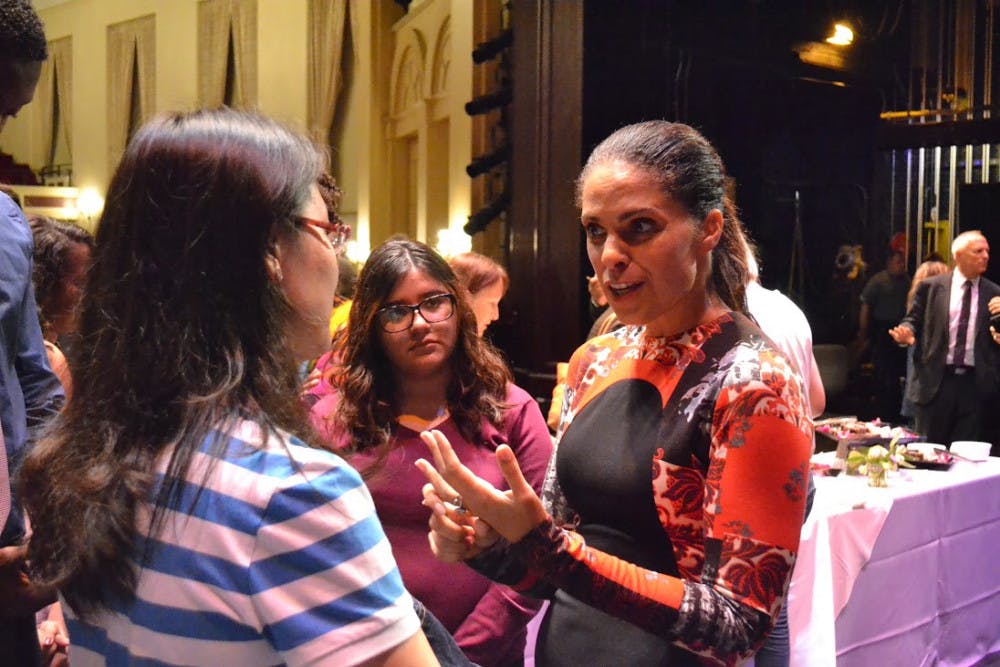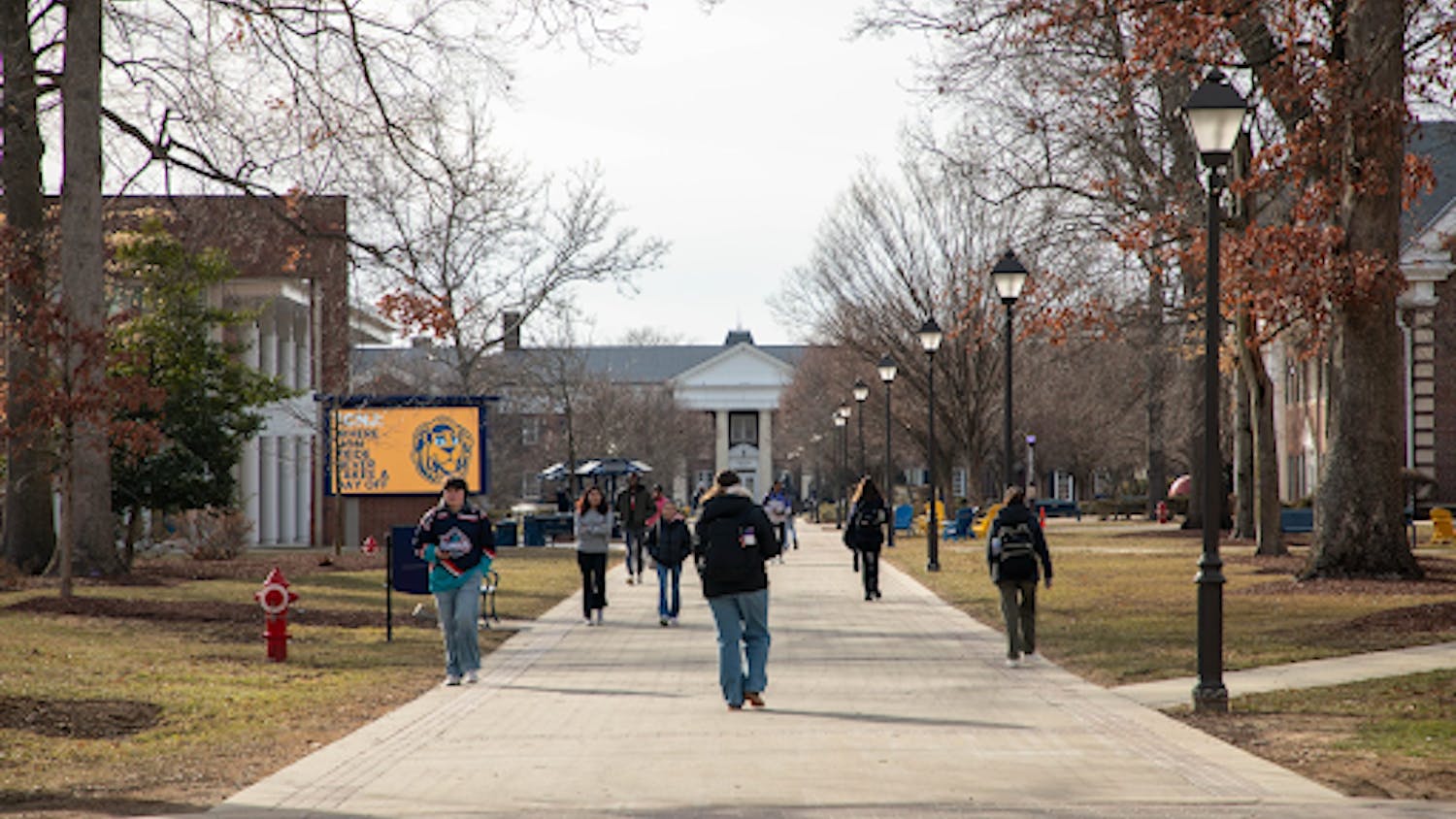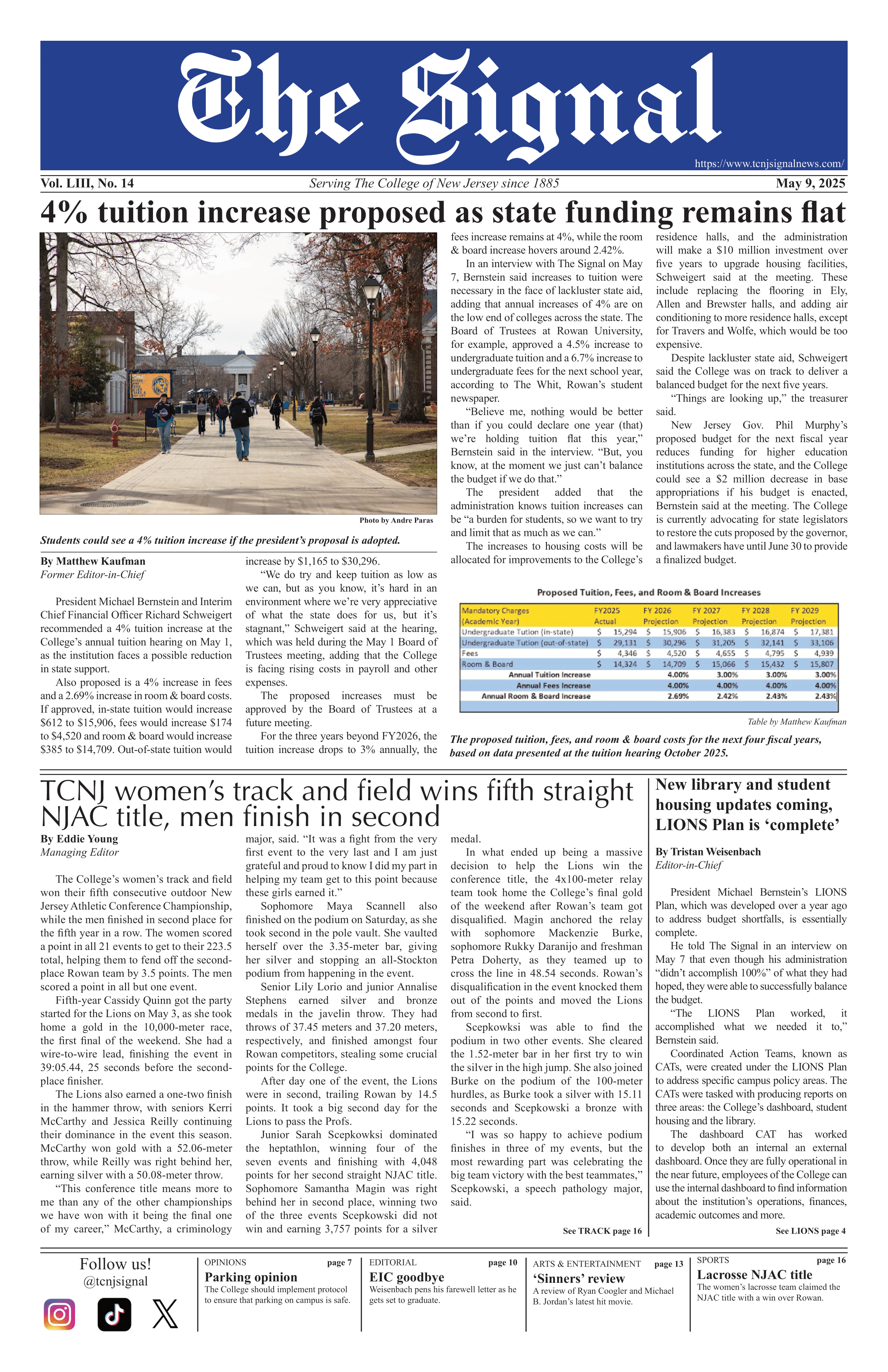By Kimberly Ilkowski
Arts & Entertainment Editor
In the early 1970s, Soledad O’Brien posed for a family photo on the front lawn of her home in the suburbs of Long Island, dressed head-to-toe in polyester stripes and sporting a thick afro. Her black and Cuban mother, white and Australian father and five equally afroed brothers and sisters were not the picture of the average American family at the time.
No matter how much they tried, the O’Brien family did not blend into the exclusively white community where they lived, yet it allowed Soledad to realize something much greater about herself and her upbringing.
“It taught me that you didn’t have to be accepted,” O’Brien said. “You didn’t necessarily have to go with what everyone else was doing and how they were doing it. You could decide the life you were going to lead and you could be successful if you had the guts to do it.”
Ever since, the award-winning journalist, documentarian and producer has forged her own path in the industry, sharing personal stories of her journey to tackle the less publicized issues of America during her lecture, “Diversity: On TV, Behind the Scenes and In Our Lives,” at the College on Wednesday, Sept. 30, in Kendall Hall.

After a multitude of anchor and correspondent positions including CNN, HBO and Al Jazeera America, O’Brien is now focusing her sights on Starfish Media Group, an organization she founded that is known for highlighting individuals’ lives in the hopes to empower viewers and bring to light issues of race, class, poverty, opportunity and more.
According to O’Brien, only 1 percent of all news stories are about Latinos, with most of those stories focusing on illegal immigration and crime.
“A journalist’s responsibility is to look at the issue in the context of what the issue really is,” O’Brien said in an interview with The Signal. “While there is a lot of conversation around immigration, if you look at the voting block, which is a very important voting block, their big issue is not immigration. Reporters need to look further and not just cover the immigration story as the easy thing to do.”
Latinos make up roughly 17 percent of the U.S. population, according to the U.S. Census Bureau, yet rarely any news coverage is dedicated to issues that are relevant to their interests.
“You would think every Latino across America goes home at night and all they’re talking about at their dining room table is immigration,” O’Brien said about the media’s misrepresentation of Latino’s core issues.
With an air of confidence and grace, O’Brien candidly recalled her time growing up in a biracial home, her experiences in the newsroom and her most recent venture as a documentarian.
“I learned the most as a reporter on documentaries whether it was ‘Gay In America,’ ‘Muslim in America,’ ‘Latino in America,’ (or) ‘Black in America,’” O’Brien said in her lecture. “As a journalist, it offered an opportunity to have a conversation that we as a country weren’t having. You could tell an in-depth and granular story about a community, (but) if you left out communities, then you really couldn’t tell the story of America very well or fair, (and) certainly not a story that was nuanced and authentic and novel.”
In O’Brien’s eyes, trying to engage these conversations and tell everyone’s story was not a fleeting chance to expand viewership.
“You created trust if you were willing to have uncomfortable stories about real issues, if you were willing to say, ‘Some of these things are what people are really talking about and we’re not going to whitewash it. We’re going to talk about it frankly and openly, undergirded with fact,’” O’Brien said.
Journalists must take particular care in the ways they speak about their subjects, as language has a profound impact on viewer’s understanding of the news. Oftentimes, a particular word or phrase that is rooted in a racist or classist stigma can alter the viewer’s perception of a story.
“It is really important, the words we use to describe people, and (using) ‘thug’ does matter,” O’Brien told The Signal. “We use ‘thug’ very specifically. We don’t use thug for some people (and) we have to ask ourselves why. When you do (use the word), you dehumanize people. As a reporter, it’s terrible because it’s not descriptive. It’s really important to think about the ways you describe people so that your words have a use.”
O’Brien noted that there are many code words in the media that differentiate those from disparate backgrounds.
“‘Oh, she grew up in the ghetto, her mom is a crack addict and her dad is an alcoholic,’” O’Brien said, referring to the initial characterization of Glorious Menefee by producers on “Black In America.” “But that’s not Glorious. Clearly she came from a very dysfunctional family, no one would deny that, but I would never describe a friend through what their parents do or how they are.”
O’Brien believes this descriptive tactic is atypical when speaking about the middle class youth. While they are often imbued with phrases that highlight their passions and goals, children living in poverty get the shorthand.

O’Brien also touched on the racial climate of Baltimore, Md., in 1958 when her parents first met.
They would both attend a daily Mass, and each day, her father would offer to give her mother a ride to church. For months she turned him down until finally she said yes and agreed to go on a date.
They planned to go out to dinner, but every restaurant they went to turned them away because, as her mother said, “interracial dating was frowned upon.”
When O’Brien asked what she meant by “frowned upon,” her mother responded, “You could get shot.”
Undeterred by those around them, her mother and father decided to get married in Washington, D.C., as interracial marriage was illegal in Maryland where they lived, as well as 16 other states.
O’Brien recounted a moment when she asked her mother what it was like walking around the streets of Baltimore in the early 1960s with her toddlers. Her mother responded, “Lovey, they used to spit on us.”
Shocked by this statement, O’Brien asked what she would do about it. “Nothing,” her mother said. “We knew America was better than that.”
Those words would eventually frame for O’Brien all the reasons she became a reporter.
“This idea that they knew their existence could move towards a change and they still loved America but they were intent on living the lives that they wanted to live and making change along the way,” O’Brien said. “There is a special bravery in deciding that you’re going to sit firmly on the right side of history (and) my parents were my very first example of forging on, even though people around you are saying no. They knew, despite the judgments of others, that in the way they lived their lives — they lived with dignity and respect for others — that eventually, people would follow.”







